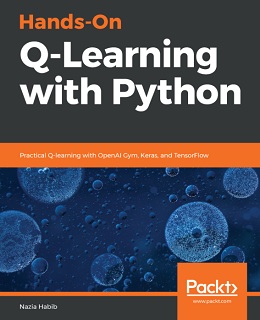Hands-On Q-Learning with Python
eBook Details:
- Paperback: 212 pages
- Publisher: WOW! eBook (April 19, 2019)
- Language: English
- ISBN-10: 1789345804
- ISBN-13: 978-1789345803
eBook Description:
Hands-On Q-Learning with Python: Leverage the power of reward-based training for your deep learning models with Python
Q-learning is a machine learning algorithm used to solve optimization problems in artificial intelligence (AI). It is one of the most popular fields of study among AI researchers.
This book starts off by introducing you to reinforcement learning and Q-learning, in addition to helping you get familiar with OpenAI Gym as well as libraries such as Keras and TensorFlow. A few chapters into the book, you will gain insights into modelfree Q-learning and use deep Q-networks and double deep Q-networks to solve complex problems. This book will guide you in exploring use cases such as self-driving vehicles and OpenAI Gym’s CartPole problem. You will also learn how to tune and optimize Q-networks and their hyperparameters. As you progress, you will understand the reinforcement learning approach to solving real-world problems. You will also explore how to use Q-learning and related algorithms in real-world applications such as scientific research. Toward the end, you’ll gain a sense of what’s in store for reinforcement learning.
- Explore the fundamentals of reinforcement learning and the state-action-reward process
- Understand Markov decision processes
- Get well versed with libraries such as Keras, and TensorFlow
- Create and deploy model-free learning and deep Q-learning agents with TensorFlow, Keras, and OpenAI Gym
- Choose and optimize a Q-Network’s learning parameters and fine-tune its performance
- Discover real-world applications and use cases of Q-learning
By the end of this Hands-On Q-Learning with Python book, you will be equipped with the skills you need to solve reinforcement learning problems using Q-learning algorithms with OpenAI Gym, Keras, and TensorFlow.
